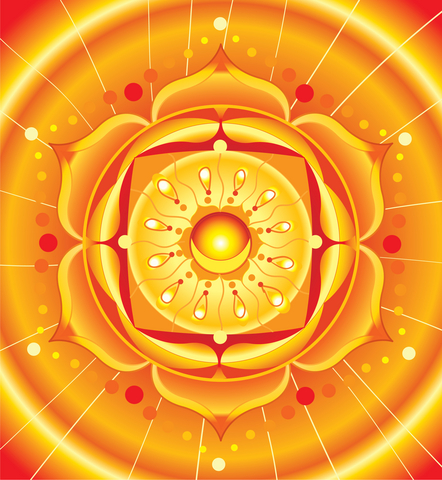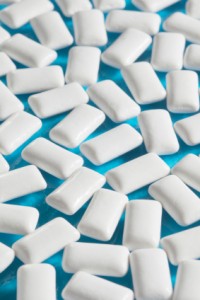Flash dance? Yeah, maybe!
Did you ever watch Flashdance, the 1983 film that tanked in reviews but went on to be one of the highest grossing films that year? Guess it says a lot about our culture. Still, I am not going to say that I didn’t find it entertaining, or that Michael Nouri wasn’t hot in his day. But I digress…
For some reason, the film’s title came to mind when I stumbled across study that examined whether or not aerobic activity could ameliorate hot flashes and night sweats, perhaps because a lot of us dance around the issue rather than address it until it gets intolerable. Or perhaps because it makes a catchy header. Or maybe because Jennifer Beals works up such a sweat during her stand-in’s routine.
Regardless, on the heels of last week’s three-parter on ‘Forties fitness’ and motivating women, I thought I’d share some interesting information regarding physical activity, namely aerobic exercise.
Exercise. I’ve been pushing it for years because for me, it’s my drug of choice. What else offers benefits that include endorphins, wellbeing, bone health, metabolic booster and weight maintenance? And who would have thought that just 5o minutes, four times weekly could have a significant effect on the main cause of menopause flooding, including irritability, clothing changes, sheet replacement and crummy sleep?
That’s what researchers are reporting in Menopause. They discovered that when they assigned menopausal women to 6 months of aerobic training, the women experienced dramatic changes in mood swing, night sweats and irritability. Briefly, the women were divided into two groups:
- 50 minutes unsupervised aerobic training that with walking or Nordic walking (walking with ski poles) at least twice a week added to walking, Nordic walking, jogging, cycling, swimming, skiing, instructed aerobics or step class twice a week, plus two health lectures or,
- Health lectures twice weekly
They researchers were able to track target heart rates (64% to 80% of maximal) because the women in the aerobic training group were monitored and then given feedback All the women also reported the frequency/severity of menopausal symptoms (frequency of night sweats, mood swings, irritability, depressive mood, headache, vaginal dryness and urinary symptoms).
Although declines in symptoms (except vaginal dryness) were seen in both groups (which accounts for what they call a placebo effect, common to all studies), reductions in the prevalence of night sweats, mood swings and irritability were significant only in women engaging in regular aerobic activity. What’s more, because the women recorded their symptoms via a mobile phone, the likelihood that recall issues might come into play were reduced.
So, what about other studies that haven’t shown any benefit from exercise? The researchers point out that in their study, all the women had fairly substantial rates of symptoms (e.g. up to 60% had night sweats, 25% depression/irritability and 30% headache) while in other studies, the numbers at the start of the trials haven’t been quite as robust.
The upshot is that f you don’t care to jump on the hormone train, it can’t hurt to give aerobic activity a whirl. Just be sure to speak to a certified trainer and your health practitioner before diving in.
Read More
Sexual desire, age and a whole lotta debunking…
 I can’t tell you the number of times I’ve stumbled across studies or articles about sexual desire. She does, she doesn’t, he does, it doesn’t, take this pill, patch, supplement, eat this food, wear this article of clothing, blah blah blah. Guess what? A lot of it is in your head (or your environment). No really! At least if you are a woman. Granted, waning hormones, namely estrogen, will likely affect vaginal dryness, pliancy and libido, at least to a certain extent. But there is a whole body of literature that points to the importance of the value of, and satisfaction with, partner relationships.
I can’t tell you the number of times I’ve stumbled across studies or articles about sexual desire. She does, she doesn’t, he does, it doesn’t, take this pill, patch, supplement, eat this food, wear this article of clothing, blah blah blah. Guess what? A lot of it is in your head (or your environment). No really! At least if you are a woman. Granted, waning hormones, namely estrogen, will likely affect vaginal dryness, pliancy and libido, at least to a certain extent. But there is a whole body of literature that points to the importance of the value of, and satisfaction with, partner relationships.
I’ve been writing about sexual desire and sexual dysfunction since I started this blog four years ago. And I continue to be frustrated by the number of solutions and panaceas that overlook integral factors like emotions and intimacy. Consequently, I was truly happy to run across another piece of evidence demonstrating the importance of these factors. This time, researchers looked at a cohort of over 800 women who were as young as 40 and as old as 100 and asked them a number of questions about their emotional health, sexual activity and menopausal status. The results? 90% reported that they were in good health, and about half had had sexual activity within a month of being surveyed, with or without a partner. Notably, a large percentage of these women were using hormones.
However, while a third of women reported that they never or almost never felt sexual desire and a third reported having low sexual desire, most of the women who were sexually active indicated that emotional closeness with their partners was key and in fact, was associated with more frequent arousal, lubrication and orgasm. And, guess what? Although aging has often been thought to be a harbinger of low sexual satisfaction (or activity, for that matter), the percentage of women who reported being sexually satisfied actually increased with age, with about half of women older than 80 reporting that they were always or almost always satisfied! Moreover, these older women also had the same degree of orgasm satisfaction as their younger peers!
One of the study’s most important findings was the fact that sexual activity was not always the litmus for sexual satisfaction, and that emotional and physical closeness were almost equally if not more important. Indeed, lead researcher Dr. Susan Trompeter notes that women in the study “who were not sexually active may have achieved sexual satisfaction through touching, caressing or other intimacies developed over the course of a long relationship” adding that “emotional and physical closeness to the partner may be more important than experiencing orgasm.”
Clearly, this research highlights the need to focus on sexual satisfaction rather than sexual dysfunction or limitations to what is commonly perceived as sexual activity. By ignoring intimacy and partner relationships, we do a huge disservice to women. Moreover, it is certainly refreshing to know that it often gets better, not worse over time.
Read More
Trick or…
treat?!
[Source: Pinup Babes]
It’s Halloween and I’ve got a treat for you. It’s called Intimina, a new line of feminine wellbeing products and information manufactured by the company responsible LELO. If you are unfamiliar with LELO, well, it’s time to get familiarized. LELO are intimate designer ‘lifestyle products’ that not only look good but are well designed, long lasting and rechargeable; I generally refer women and men to LELO first when discussions about adult massagers and intimate market items arise. In fact, I was introduced to LELO several years ago and never looked back. And while the price point is higher than what you might be accustomed to when it comes to vibrators, they are well worth the extra investment.
But I digress…
I received an email from an Intimina PR manager several weeks ago, inquiring if I would be interested in checking out their Intimina brand. When I read that they were attached to LELO (the co-founder is married to LELO Founder Filip Sedic), I didn’t hesitate for a second; I was already a major fan of theirs’.
According to the promotional material, “Intimina by LELO is an exciting new brand focused on providing women with the the very highest standard of products to supplement their intimate wellbeing…” Okay, sounds like standard PR jargon, right? However, I am very impressed by their product offerings, which range from unique Kegel exercisers to maintain and strengthen the pelvic floor to feminine moisturizers to their famous massagers (rebranded in pink, which admittedly, I am not crazy about but if the shoe fits…).
Most of you probably know that Kegel exercise is repetitive contracting and relaxing of the pelvic floor muscles (the vagina and ligaments that support the bladder) in order improve tone and strength, treat or prevent prolapse and stress urinary incontinence. The latter condition, which describes involuntary leakage of urine because the the muscles supporting the urethra don’t shut as tightly as they should, disproportionately affects women, increases with age, and often occurs after pregnancy. It is prompted by activity such as coughing, sneezing and heavy lifting – anything that places pressure on the bladder. Currently, as many as 15 million women in the US are affected by stress urinary incontinence, and with age, it may occur concurrently with overactive bladder, a condition associated with an uncontrolled urge to urinate, frequency of urination, incontinence and nighttime awakening to urinate.
Having never given birth, I’ve not given much thought to strengthening my pelvic floor muscles. However, I know many women who suffer from stress urinary incontinence. Consequently, I am going to try out the Intimina Kegel Exercisers and report back.
My treat. No trick!
Happy Halloween and stay tuned…
p.s. Treat yourself to a LELO product while you await the Intimina review. 0 fat, 0 calories, 100% pleasure.
Disclaimer: Intimina/LELO did not ask me to write about their product nor did they pay me to do so. They provided me with a free sample of the Kegel Exercisers, the Feminine Moisturizer and some background materials. I intend to give them a test drive simply because stress urinary incontinence is a huge problem in women, as is vaginal dryness as women age.
Read More
Just chew your [fill in the blank] away…with Zoft
[Photo does not depict actual product]
No! It really works! And it’s as easy as chewing gum.”
“What’s that,” you ask?
Now you can just chew the menopause [blues/anxiety/hot flashes, mood swings, night sweats, heart palpitations, urinary problems AND vaginal dryness] away! Wow – who knew it was so simple? In fact, Zoft ® Balance Gum (previously called Zoft Menopause Gum) will cure what ails you in just weeks if not days, with the added benefit of fighting dental decay, improving concentration AND fighting bad breath.
Zoft balance is a unique blend of Dong Quai Root, Black Cohosh Root Extract, Damiana Leaf, and Mexican Wild Yam Root, harnessing the power of indigenous knowledge to fight menopausal symptoms. Moreover, this breakthrough has been featured on ‘The View’ not once, but TWICE, which of course, provides an authoritative testimonial as to its efficacy.
Wait! There’s more….the company also offers Fulfill gum (pun intended???) to enlarge your breasts WITHOUT surgery, and Slim gum to help you get back into that size 4 pair of jeans. And just in case your partner feels left out, the company manufactures Relax gum to take that stress out of his or her life.
One-stop shopping for all that ails. Chew on that, won’t you?
Read More
Wednesday Bubble: Warn me
This week’s Bubble is straight out of the buyer beware files. Introducing Warmi ‘Better Menopause Relief.’
Warmi, according to the manufacturer website, is “a unique vegetable and fruit extract supplement. It contains 85% organic ingredients in a vegetable capsule and is 100% Vegetarian.” Moreover, Warmi provides safe, natural, full spectrum menopause relief” meaning that in a single study of 122 women, Warmi “also enhanced hormonal balance, mood, cardiovascular and bone health, vaginal dryness and intercourse discomfort — even overall quality of life. Many benefits were noted in just 30 days.”
Evidently, Warmi delivers, all that and more.
How, you ask?
Warmi’s active ingredients are:
- Gluocosinates, plant chemicals that are found in cruciferous vegetables such as cabbage, which are believed to help fight cancer and possibly, promote heart health.
- Beta-sitosterol, a substance found in plants and suggested to have properties similar to cholesterol. It is used in some European countries for benign prostatic hyperplasia (enlarged prostate) and according to the Warmi website, has been shown in laboratory animals to have some sort of weak estrogen effect that “may benefit the reproductive system.”
- Hesperidin, a flavonoid found in citrus fruits which has shown promise in laboratory animals to potentially reduce blood pressure and cholesterol and work as an anti inflammatory and produce pain killing effects. The Warmi website says that it may also ‘help bone metabolism.’ Note that this claim is based on one study done in mice, which demonstrated a decline in the loss of bone density.
So, Warmi is made up of cancer and heart protective ingredients, may alleviate pain, and…helps with menopausal symptoms? But how does it work? In the FAQ section of the product website, it says that while “The exact mechanism of Warmi is not fully understood but is believed to be associated with certain estrogen receptors.”
I’m sorry…WHAT?!
All I can think of when I think ‘Warmi’ is “warn me.” Yes, warn me that medical and scientific claims without substantiation are to be questioned, that comparisons to existing alternative strategies are difficult without well-designed research, and that unpublished, unreviewed product data are just that: unpublished, unreviewed and non-vetted.
Forewarned is forearmed.
Enough said.
Read More









